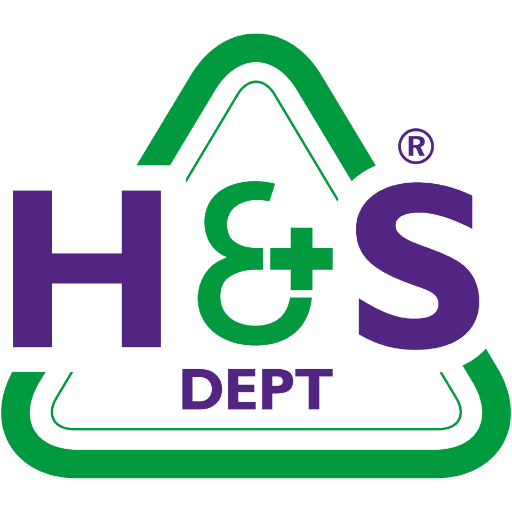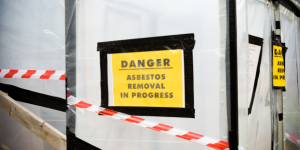Stress Awareness Month: what can you do to help your employees?
Every April, The Stress Management Society holds its annual Stress Awareness Month. Previous events have focused on starting a conversation, but this year is about taking action.
The slogan is #choosehope, and organisers are holding a 30-day challenge. Participants are encouraged to choose actions that reduce stress, and perform them daily for the whole of April.
Whether or not you’re taking part, Stress Awareness Week is a great excuse to talk about workplace stress. According to the most recent HSE statistics, stress is a major factor in workplace ill health.
Over 900,000 workers suffered from stress, depression or anxiety in 2021/22, accounting for over half of workplace health complaints. This was an increase of almost 100,000, suggesting the mental health of UK workers is declining.
As an employer, there are several things you can do to help:
- Recognise the signs of stress and be ready to intervene if an employee seems overwhelmed
- Encourage employees to talk to you if they feel stressed
- Complete a stress risk assessment to identify possible stress factors
- Take steps to reduce these risks, e.g. changing shift patterns, reducing workloads or hiring extra staff
For help with managing stress in your business, don’t hesitate to get in touch.
Don’t let younger workers underestimate the dangers of asbestos
Although asbestos was banned in 1999 for new installations, the danger has not disappeared. The substance is still present in 1.5 million buildings that were built or refurbished before the ban. Every year, over 5,000 people die from asbestos-related illnesses, making it the single biggest cause of work-related deaths in the UK.
The danger is greatest among construction workers, and there is a particular threat to those who began their careers after 1999. Symptoms can take decades to develop, creating a sense of complacency in some younger employees.
In order to address this, the HSE has launched its Asbestos and You campaign. This aims to educate young tradespeople about the risks of exposure, and to encourage them to take the necessary precautions. As HSE’s Mike Calcutt explains, this is vital knowledge:
“It is crucial that all workers know how to recognise the dangers and take the right actions to protect themselves and those around them from being exposed to asbestos fibres.”
If you want some expert external input, give us a call.
Workplace hygiene: how to make your spring clean count
Nobody wants a return to mask wearing and social distancing, but there are some pandemic hygiene practices that we’d like to see continue. Shared offices are a breeding ground for germs, and this can have a serious effect on employee health. As it’s the season of spring cleaning, here are some ways that you can make hygiene a priority in 2023.
“Is my office really that dirty?” you may ask. Unfortunately, the answer is probably yes. Research shows that shared offices are home to a staggering number of germs and bacteria:
- The average desk houses 10 million bacteria, 400 times more than a toilet seat
- A US study found that taps, keyboards, fridge doors and microwaves were the dirtiest office surfaces
- Less than half of employees clean shared equipment after they use it
There are proven links between unclean offices and poor employee health. This is bad for workers and bad for business. The UK loses 30 million working days a year due to poor health, and many of these are caused by colds or flu. By focusing on hygiene, you could save a lot of money:
- A Norwegian study found that absences fell by 12.5% when cleaning practices were improved
- US researchers found that encouraging the use of hand sanitiser reduced healthcare claims by 20%
A dirty office can also damage morale. 40% of office workers worry about poor hygiene, and this anxiety could lead to a loss of focus. Gen Z workers are especially concerned, so you’ll need to demonstrate a commitment to cleanliness if you want to recruit new talent.
Spring cleaning has come to mean clearing out inboxes and reorganising schedules, but the changing of the season is also a great excuse for some old fashioned scrubbing. Take the time to mop the floors and wipe down surfaces in communal areas. Pay particular attention to places that are frequently touched, such as microwave doors and lift buttons.
It’s also important to promote ongoing hygiene. You can do this in a number of ways:
- Ask employees to clean shared equipment after use
- Provide hand sanitiser and top it up regularly
- Put up hand washing reminders in toilets
- Consider hiring a professional cleaning service to clean communal areas on a regular basis
For more hygiene tips, or for any other health and safety advice, don’t hesitate to give us a call.
Are your toilet facilities up to scratch?
Every employer has a fundamental duty to provide adequate toilet facilities. This applies to workplaces of any description, as a recent HSE prosecution shows.
A company and its director were collectively penalised more than £5,000 after failing to provide adequate facilities at a North London construction site. HSE inspectors found that the site toilet was not flushable, and was in a room with no door or window coverings. The company had also failed to provide a sink, hot water, soap or towels.
HSE inspector Emma Bitz highlighted the seriousness of the offence:
“Providing suitable and sufficient toilets is an absolute duty and there is no exception to them being provided or made available.”
The prosecution took place under the Construction (Design and Management) Regulations 2015. This states that temporary worksites must include a flushing or chemical toilet and running water.
This is industry-specific legislation, but there are general laws covering toilet facilities. The Workplace (Health, Safety and Welfare) Regulations 1992 stipulate that all permanent workplaces must provide the following:
- Enough toilets and washbasins for everyone
- Separate facilities for men and women, or individual rooms with lockable doors
- Hot and cold running water
- Plenty of soap and other washing agents
- Toilet paper and a place to dispose of sanitary products
- A basin that is large enough to wash the hands and forearms
- A way of drying hands – either paper towels or an air dryer
You’re also required to provide accessible facilities for disabled employees, and to ensure that toilets are cleaned regularly. If you’re unsure of anything, feel free to ask!
Accreditation of the month – SafeContractor
A safety accreditation is a great way to set yourself apart from other contractors. There are many available, but two stand head and shoulders above the rest. We’ve already covered CHAS, so now it’s time to look at SafeContractor.
SafeContractor is a wide-ranging accreditation that recognises multiple areas of compliance. It was set up in 1999 to reduce bureaucracy in the bidding process. By creating an all-encompassing accreditation, SafeContractor aims to make prequalification simpler for both clients and contractors.
SafeContractor covers multiple areas of health and safety, finance and ethics. It goes beyond general best practice to include specific areas such as working at height and handling hazardous materials. This makes it extremely valuable as it shows clients that you can be trusted with work of all kinds.
The SafeContractor application process is not for the faint of heart. You’ll need to prove compliance in dozens of areas, and this takes a lot of work. Luckily, we can help.
We have years of experience with SafeContractor applications. We’ll take care of everything, making sure that you’re in a position to be approved on the first attempt. Give us a call to find out more.






